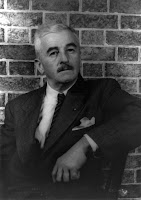When your character is caught up in the heat of the moment you want the emotion that you evoke to be authentic. She finds out that her best friend took her lunch money without asking. The neighborhood bully is spreading lies about him behind his back at school. The day has finally
come for her to pick up her new puppy at the shelter.
Resources such as the series by Angela Ackerman and Becca Puglisi can help: The Emotion Thesaurus, The Positive Trait Thesaurus and The Negative Trait Thesaurus. But unless the emotions come from deep inside you, the writer, true feelings that you have experienced, whether joyful or filled with pain, may not ring true when expressing your character's feelings.
Take a Leaf from an Actor's Playbook
To cry on demand, according to Wade Bradford, in "How to Cry: An Actor's Guide to Crying and Tears," http://plays.about.com/od/basics/ht/How-To-Cry-An-Actors-Guide-To-Crying-And-Tears.htm, an actor need only recreate into her own true emotions, by:
- Tapping into her memory: a sad experience that resulted in overwhelming grief or pain. Caveat: An actor must be in tune with her past.
- Choosing the right memory for the right moment.
- Finding ways to connect script lines with personal moments when a memory isn't enough. Some ways this can be accomplished is by thinking up upsetting events that didn't actually happen to the actor. What if someone talked her into going on a roller coaster ride on the highest, fastest roller coaster in the world, and she's afraid of heights? Her dog fell down a dry well and is lying on the bottom, hurt?
In the July 1, 2014 post, "4 Tips for Writing Great Scenes," by Ingrid Sundberg from her blog ingridsundberg, Sundberg describes the importance of creating emotion in scenes. The first tip is to make sure your scene has dramatic action, " . . . the action the protagonist takes to resolve the problem he has suddenly been faced with." Sundberg quotes Robert Mckee in STORY: "Well plotted stories are built on stringing together the scenes that have dramatic action. These are the important moments within the character's life that move the plot forward." Tip two asks, "Is there a significant emotional change in the scene? A great way to tell if your scenes have dramatic action is to check and see if there's a significant emotional change;" i.e., having the character start the scene happy
and leaving it sad.
Here's where you express your own true emotions.Think of the main emotion expressed, jot it down and reflect on it. If need be, consult your personal feelings and a resource such as The Emotion Thesaurus. After writing the scene, the next day (after a rest) see if you've shown the utmost emotion so that your reader may experience and identify with what your character is going through.
Create a Personal Emotion List
To tap into your own authentic emotions, try keeping a notebook or computer file of your own poignant moments. Every time an experience happens to you or occurs to you, add it to your list. The seventy-five emotions listed in The Emotion Thesaurus can jumpstart your list, with such topics as envy, guilt, happiness, denial, and confusion. Here are a few of my personal emotions I've thought of so far.
Surprise: The Elephant Foot Story
Early one spring for Mother's Day my family wanted to get me a wild-bird-watching gift to enhance my love-of-birds hobby. They found a cement bird bath, not fancy, but an excellent addition to my growing collection of books, bird feeders, bird clock--you get the picture. The problem was, where to store it until the allotted day. Knowing me and that I would not notice, they contrived to hide the bird bath in plain sight. They turned the stem part upside down with the wide-mouthed tub stored next to it on the garage floor, right next to where I parked my car.
On Mother's Day morning I went outside and was completely surprised to find the birdbath set up in the garden filled to the brim with fresh water. When asked if I had noticed anything different in the garage on the days leading up to Mother's Day, I said, "You mean the elephant's foot?" For that is what my mind told me I saw all those days when getting in and out of my car. Needless to say, this story has become part of our family lore, which to this day I haven't been able to live down.
Scared/Afraid: An Unwanted Parking Lot Visit
On the day of my dental appointment I ran a quick errand at the grocery store and made it back to my car with minutes to spare. I had my hand on the door handle when a man walked up and asked if I would give him a ride to a location about twenty miles away. Instinct told me I had only seconds due to the sinister look on his face. He took a step toward me just as I pulled the door handle and jumped in, mumbling that I had to hurry to the dentist's office. I locked the door and sped away. A second longer and I may not have gotten away.
Sad: Rabbit in the Road
I debated whether to include a recent sad event that happened to me. Originally, I thought I'd include only fun personal stories. One of my daughters changed my mind. She told me that sad stories run deep and therefore are unforgettable. This sad event, as I tell it, still brings tears, which qualifies it for my Personal Emotion List. Just two weeks ago while stopped to pick up the morning paper, I saw two cottontail rabbits in the middle of the road. One lay flat and unmoving, the other very much alive, sitting with its chin resting on its parent/sibling/cousin's lifeless body. A movement from our car sent the live rabbit scampering into the underbrush. I rode tearfully away, with an intense twist in my heart, as if gripped by a fist. The experience planted itself immediately in my heart as one sad occurrence I will never forget.
If you're pressed for time: Perhaps all that is necessary is a simple index with notes jotted beside each emotion you want to elicit. Whatever method you use, the important thing is to endow your character with the truest emotion possible so your reader can laugh, cry, be annoyed, right along with the character in your story.
Photo courtesy of http://www.freevector.com/free-heart-graphic-vectors/
Linda Wilson, a former elementary teacher and ICL graduate, recently completed the online Fiction Course with www.joycesweeney.com, and is currently taking Joyce's Picture Book Essentials course. Linda has published over 40 articles for children and adults, six short stories for children, and is in the final editing stages of her first book, a mystery story for 7-9 year olds. Follow Linda on Facebook.




























